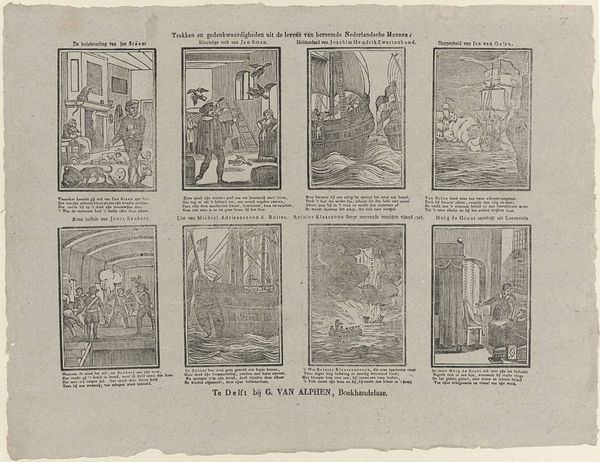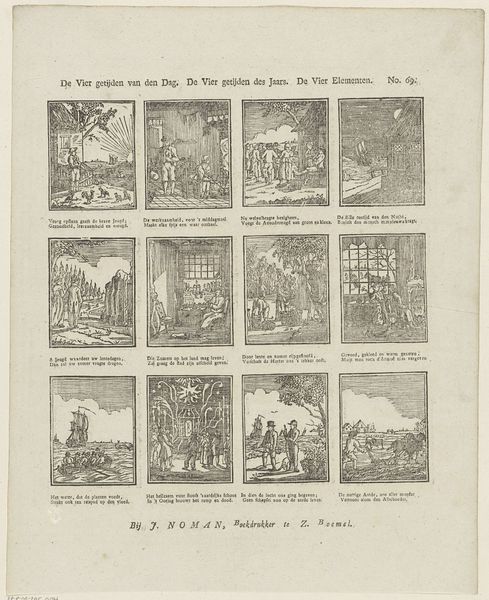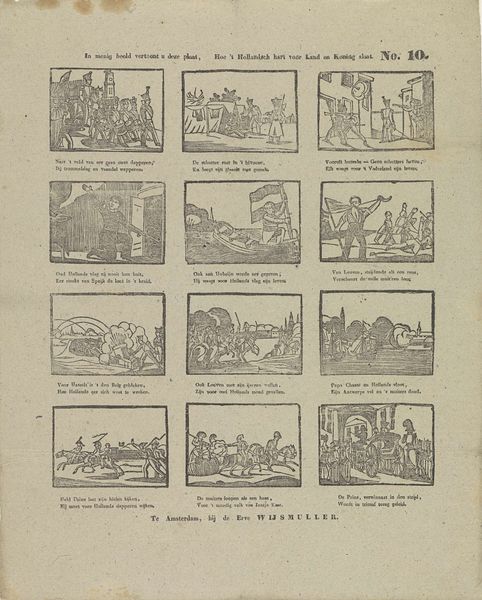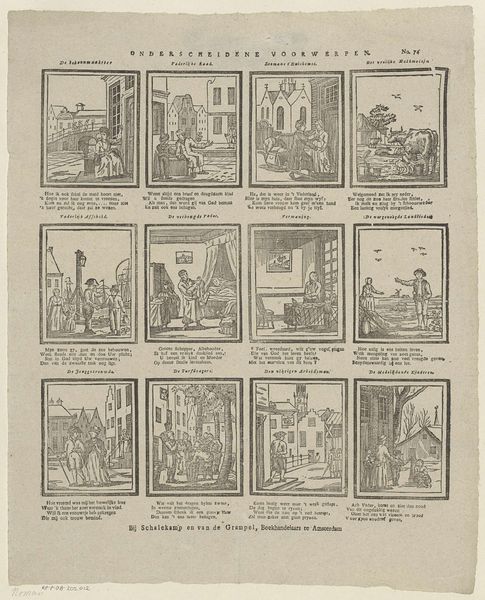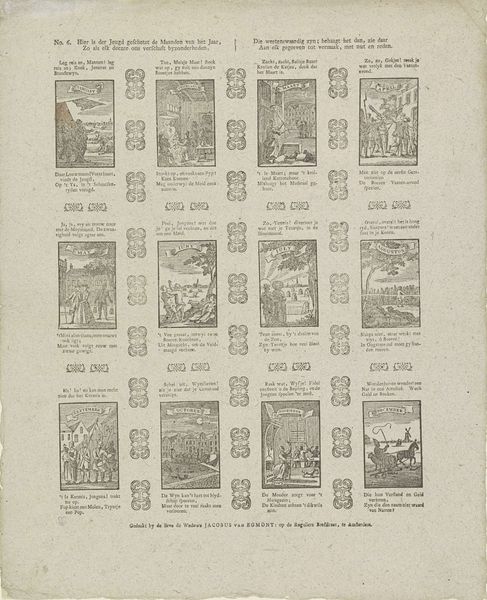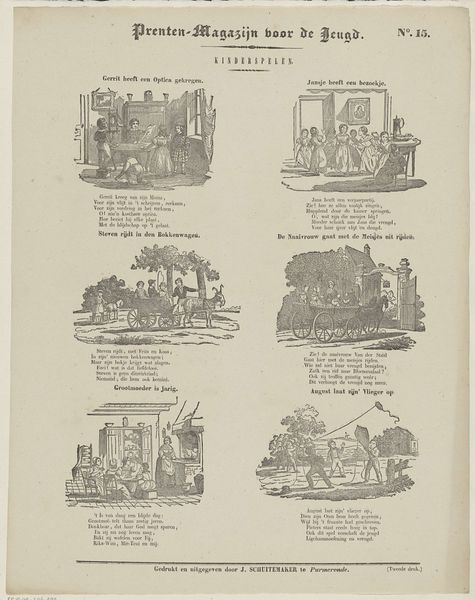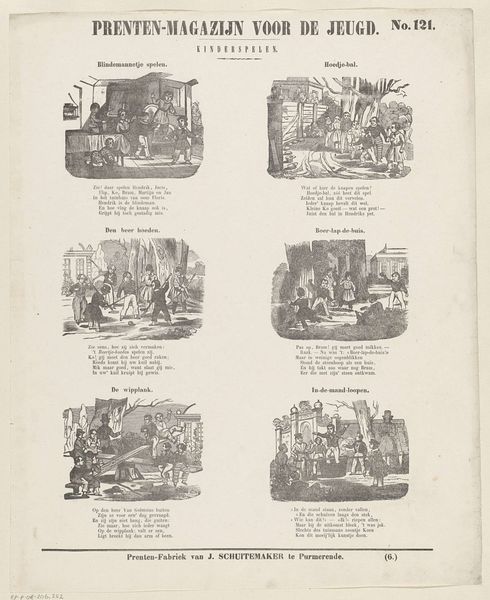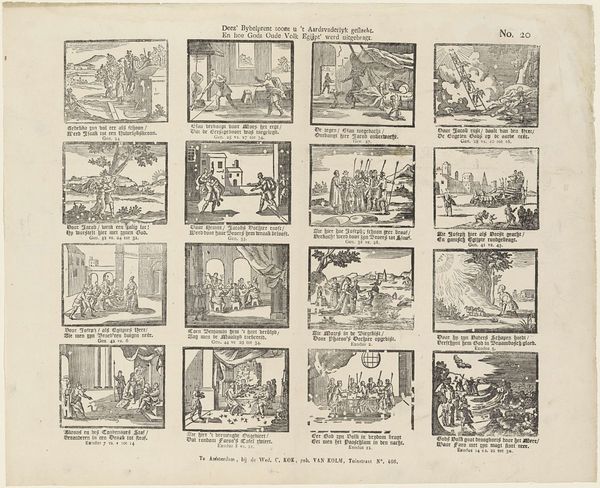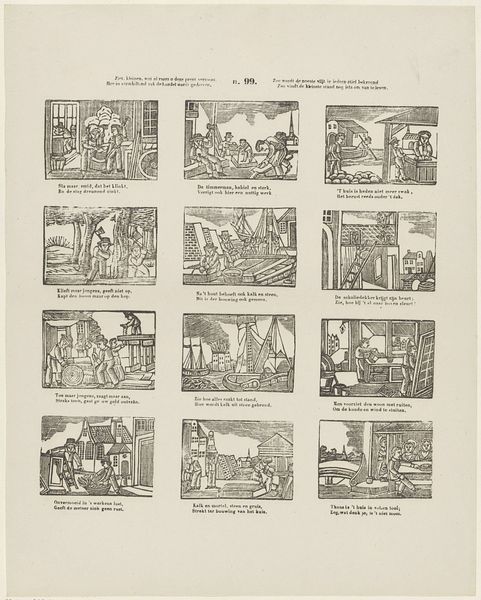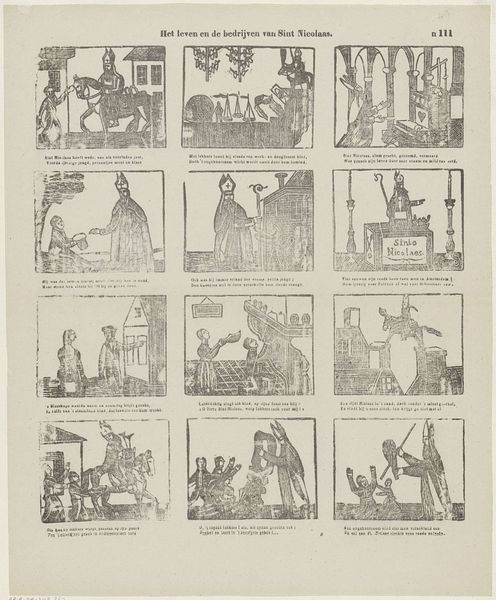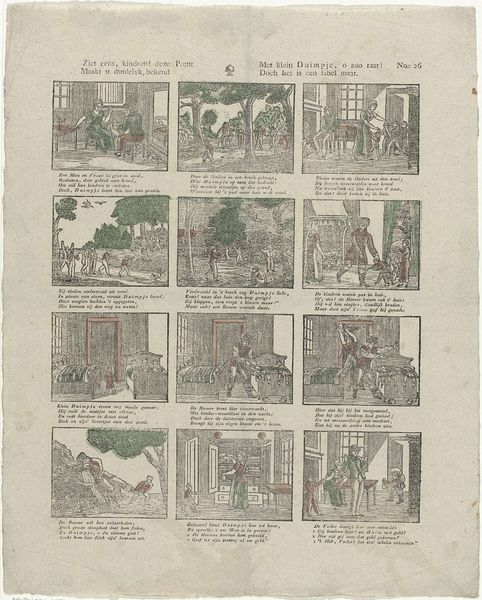
Hij, die maar werken wil, verdient gewis zijn brood, / Zie elk hier werkzaam zijn, en dit is ieders plicht, / Den ledigganger, dreigt door luiheid, hongersnood, / Verlies uw' taak, o jeugd! doch nimmer uit 't gezicht 1806 - 1858
0:00
0:00
print, engraving
#
aged paper
#
toned paper
#
narrative-art
#
dutch-golden-age
# print
#
sketch book
#
personal sketchbook
#
genre-painting
#
engraving
Dimensions: height 323 mm, width 406 mm
Copyright: Rijks Museum: Open Domain
This print was made by Willem Carl Wansleven, a Dutch artist, likely sometime in the early 19th century. It is made of 12 small images and a poem about the value of work. Wansleven's print reflects a cultural emphasis on the Protestant work ethic prominent in the Netherlands at that time. The images are designed to show different honest forms of labour and how they benefit society. The Dutch Golden Age of the 17th century saw a rise in the merchant class as well as the development of new ideas about trade and finance. These social changes brought about a culture that valued hard work, thrift, and personal responsibility, characteristics which came to be seen as evidence of God's grace. As historians, we look at images like this for evidence about the social and economic values of past societies. Prints like this one were often distributed by religious organisations or civic groups to help reinforce the idea that working hard was good for society and pleasing to God.
Comments
No comments
Be the first to comment and join the conversation on the ultimate creative platform.
